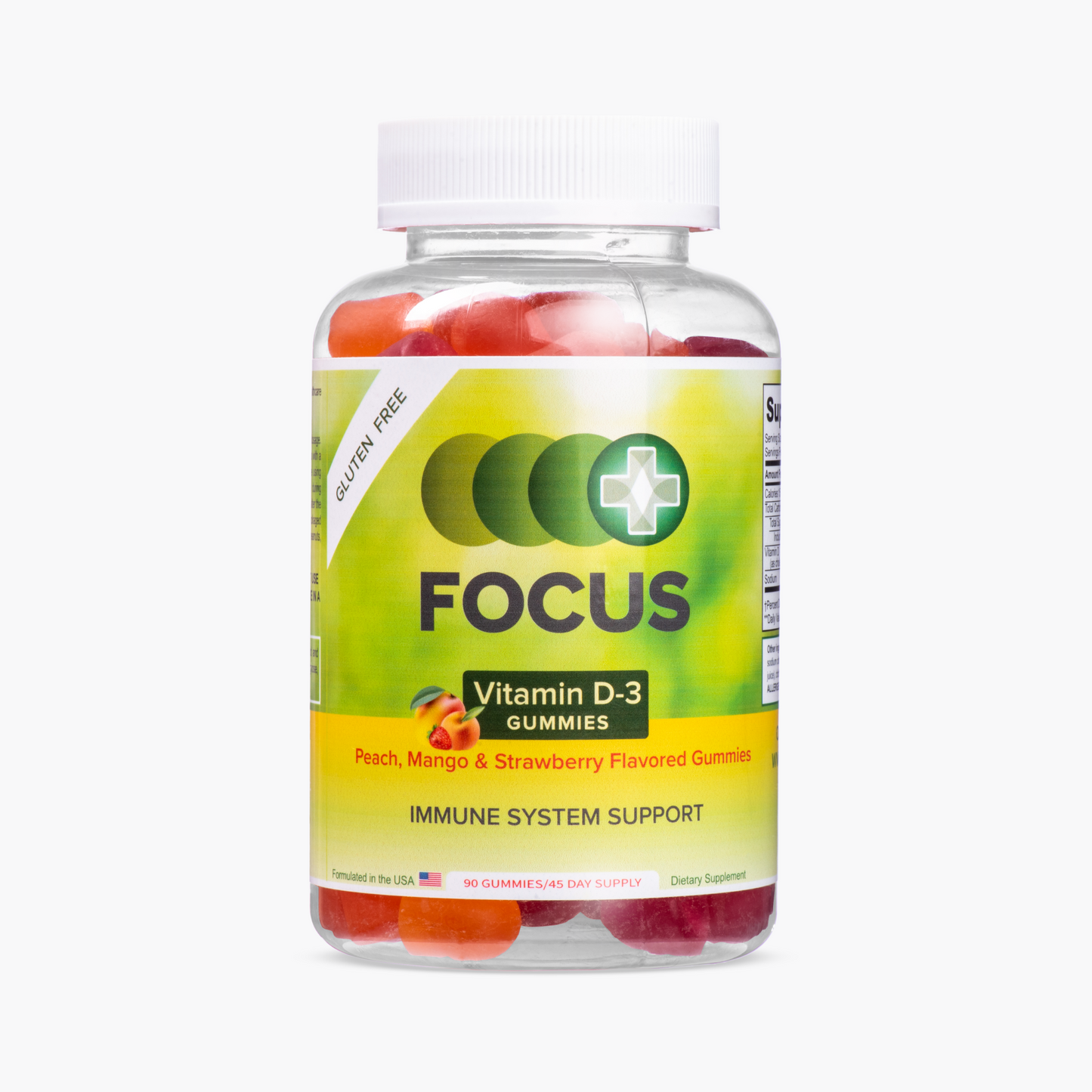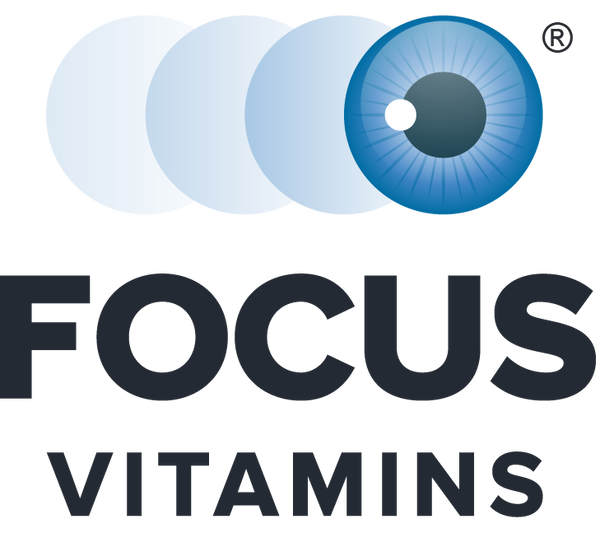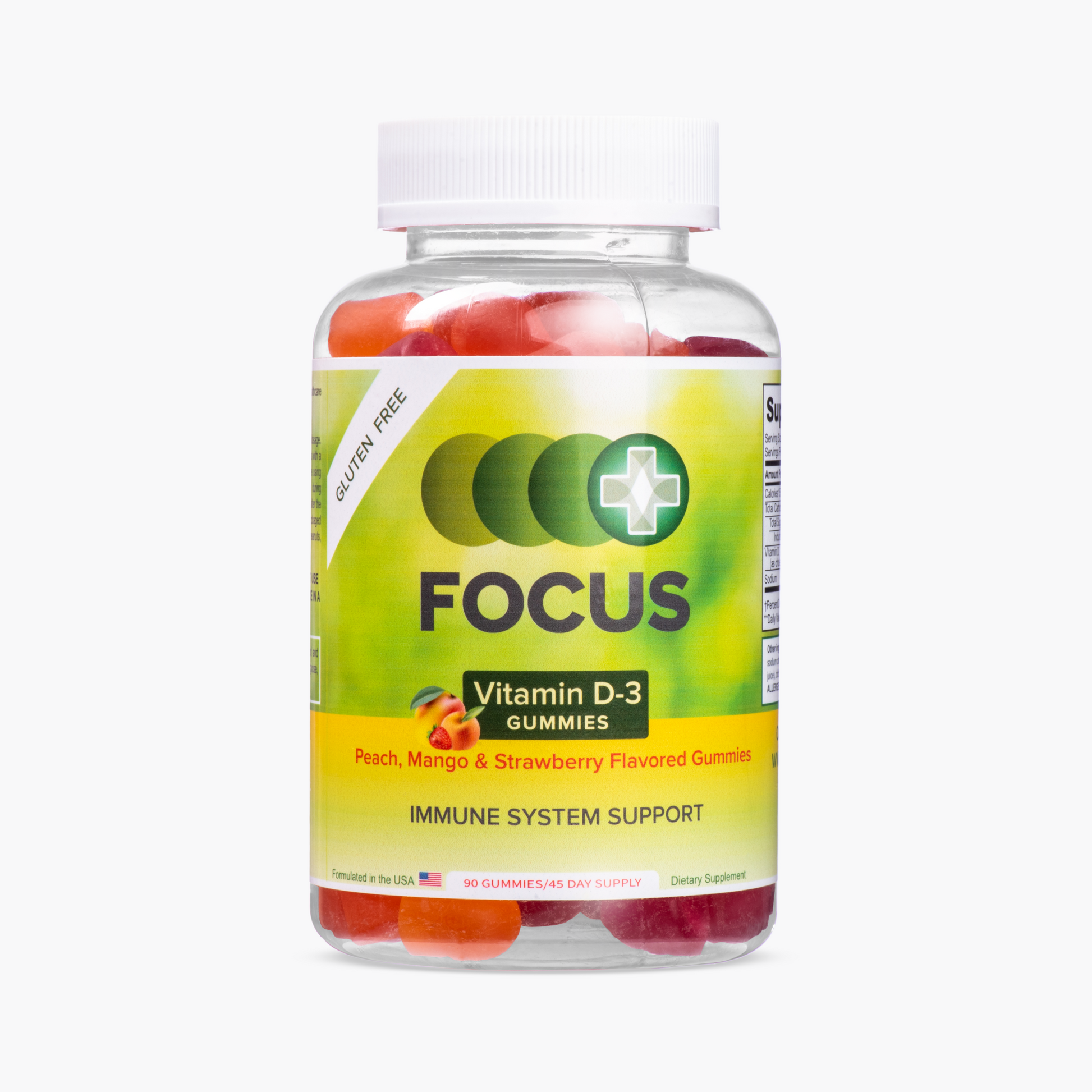Focus Vitamins
Vitamin D-3 Gummies
Vitamin D-3 Gummies
- Peach, Mango, & Strawberry Flavored
- Increases Bone Health
- Helps Bones, Teeth, & Muscles to be Healthy
Couldn't load pickup availability
Vitamin D-3 is a fat-soluble vitamin. Your skin makes it for your body when it comes in contact with the sun. Using sunscreen, wearing clothing that is designed to protect the skin, and age may factor in and reduce the amount of vitamin D-3 that your body might otherwise make for itself. Some foods are rich in vitamin D-3. These include beef liver, fish liver oils, egg yolks, the flesh of fatty fish, and cheese.

delicious!
FAQs
What amount of vitamin D-3 can I take?
The recommended daily allowance (RDA) amount of D-3 is 600 IU for adults up to age 70. Then, it is 800 IU for individuals who are older than 70. Most age groups can take up to 4,000 IU. You can consult with your doctor to see what amount works for you.
What is vitamin D-3 deficiency?
There are times when an individual may not be getting enough vitamin D-3. This may happen when you don’t get the recommended daily allowance of D-3 over a period of time or if you are not able to keep up with exposure to sunlight. Sometimes, your body isn’t converting nutrients to an active D-3.
When you are not getting enough consistent levels of vitamin D-3, you may experience the following:
- Tiredness
- Discomfort in bones or joints
- Muscles feeling weak, cramping, or achy
- Rapid changes in mood
How are vitamin D and vitamin D-3 different?
Vitamin D-3 (cholecalciferol) is a form of vitamin D. It occurs naturally in seafood, liver, and eggs. The body converts vitamin D-3 into a practical form of vitamin D.
Is there a time of day that is better than others to take vitamin D-3?
As a fat-soluble vitamin, it is best to take with fat for ideal absorption. It doesn’t matter what time of day you take it. You can take it when it best suits your schedule anytime of morning or night. Just remember to take it with a food that has fat in it.
Will I get energy from taking vitamin D-3?
If you are deficient in vitamin D, adding a supplement over time will likely help to increase energy levels.
Can I take vitamin D-3 every day?
Yes. Vitamin D-3 at the recommended daily allowance (RDA) can be taken every day.

